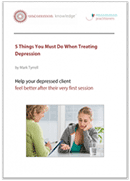Mind Sculpture - Unleashing Your Brain's Potential
 |
Author: Ian Robertson |
Review by Mark Tyrrell
I once saw Ian Robertson, the author of Mind Sculpture, speak at a lecture in London. Although he was generally entertaining and engaging, what stood out was his premise that the brain is comparable to a muscle that can be developed throughout your life.
During the lecture, Robertson described the brain as a ‘trembling web’ of ever-changing inter-connections, shaped by your experiences.
In this optimistic and encouraging book he describes how education molds your brain, stimulating new connections between cells. That although genetics play their part, education and effort protect against the ravages of time, disease and injury.
Brainpower is also boosted by physical exercise, he says, by stimulating the secretion of ‘neurotrophins’, substances which encourage sprouting between brain cells. He tells us why love, affection and positive interactions with others also help our brains work well.
Happily for those of us who are getting on a bit, he also dispels myths about ageing and the brain:
“Another mental arena where age beats youth is absentmindedness and carelessness. People in their seventies are less likely to forget to do things they set out to do than younger people. So, for instance, they are less likely to forget an appointment or to make a phone call. They also take more care when they are performing tasks and make fewer mistakes than younger people.”
One reason why older peoples’ brains function more efficiently in some ways is because there brains have literally had more practice over the years. Repetition of an action or thought pattern strengthens synaptic connection and forges new ‘pathways’ in the brain.
“Use it or lose it!” says Robertson - your brain is your investment, so look after it. With practical instruction on how to do this, this book is almost as engaging, informative and fascinating as the man himself.
Review by Chris Roberts
It is well known that repetitive actions or tasks become “automatic” after a while. Some skills, like walking or chewing, we take for granted; others, like touch-typing, must be learned. When a task is executed automatically, it is said to be done “subconsciously.”
Anything we do without conscious thought is done subconsciously. The average person performs many subconscious actions in the course of his or her daily routine (an amazingly large number, if one really thinks about it). Yet few people realize how the brain handles these subconscious actions.
The first few chapters of “Mind Sculpture” explain how the brain physically reconfigures itself (a process called Hebbian Learning) in response to repetitive actions or stimuli. Our brains are not “hard wired” from birth. New connections between previously unconnected brain cells are formed each time we learn a new skill or form a new association. As we learn new skills, we really are physically “sculpting” our minds.
Hebbian learning occurs because “cells that fire together, wire together.” Take the example of a billboard advertisement which shows a particular automobile alongside a beautiful woman. Two sets of brain cells will fire in response: the brain cells that control sexual arousal and the brain cells that recognize the auto. After repeatedly viewing the billboard, these two unrelated sets of brain cells become physically wired together simply because they have fired together again and again. Eventually, seeing the auto by itself will cause the arousal brain cells to fire and the prospective buyer to feel “turned on.”
The ramifications of the brain’s ability to re-wire itself are the subject of the rest of the book. How the brain can repair itself after suffering damage is explained in detail, as well as the brain’s response to loss of limb or sight, etc.. Learning and emotional trauma are also examined.
The author includes real life examples of people who have recovered from injury or trauma. He also points out that many victims could probably realize a fuller recovery if only more emphasis were placed on using the brain’s untapped potential: our mind’s ability to sculpt itself.








